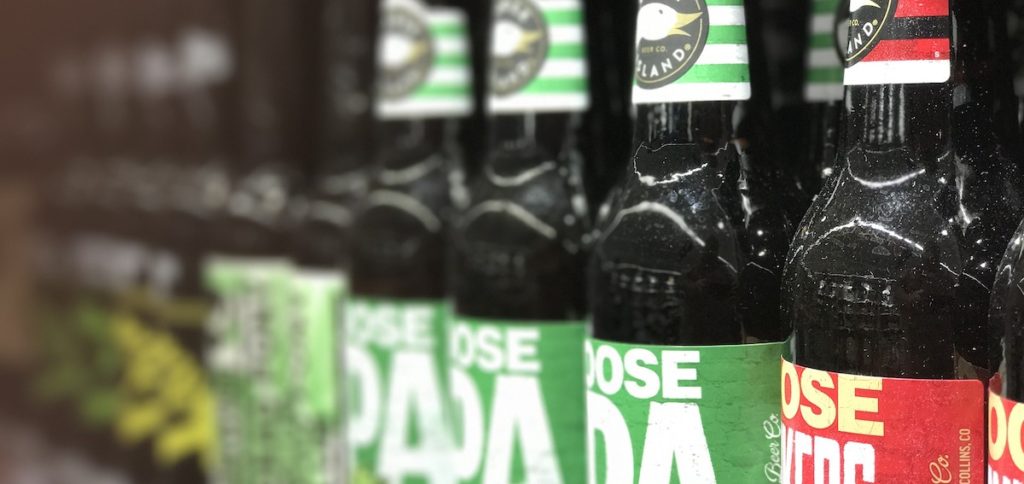Do we need to rethink the craft beer market?

Craft beer has become an integral part of the beverage culture in Germany. But, an initial wave of consolidation is brewing in the still young craft beer movement.
While craft beer maintains its status as a trend, it is still a niche in Germany. That’s the conclusion reached in a current study from the market research institute Splendid Research. Although 43 percent of all beer drinkers have tried one of the specialties, the vast majority drink craft beer just a few times a year or less. That was the finding from a representative survey conducted online with 1,229 beer drinkers between the ages of 16 and 69 years. The study also found that the target group for craft beer drinkers is very narrow. Men between the ages of 20 and 40 years old are still the primary drinkers of the handcrafted specialties.
What’s beyond dispute is that in recent years, craft beer has contributed to new momentum in the beer market. While overall beer sales in Germany continue to decline, the significance of the beer category is growing. Craft brewers are breathing new life into the German market and enriching its diversity of beers. Even large breweries such as Veltins and Krombacher now feature beer specialties in their portfolios that have been inspired by trends from the craft beer scene.
Market experts agree that this positive momentum is sweeping over the entire industry. But, it is also clear that distinctive craft beer will most likely remain a niche and that the hype of these early years will eventually die down. An initial wave of consolidation is now brewing in the craft beer movement. Some craft brewers have disappeared from the market, others are forming new alliances. The reason is that the cost pressure on all breweries has risen dramatically and is still intensifying. This is changing the craft beer market.
Craft beer is often intentionally labeled according to the IBU (International Bitterness Units) unit of measurement to indicate the above-average bitterness of a craft beer. A beer’s taste variety and bitterness therefore largely depend on the choice of hops (aroma hops vs. bitter hops) and the amount of hops added.
The craft beer market is thinning out
The fact is that retail craft beer sales are declining. According to the Nielsen market research institute, from July 2018 to June 2019, sales in German food retail and beverage warehouses fell by 5 percent to around 74,000 hectoliters, which corresponds to a 0.13 percent share of the German beer market. With the relatively high prices of individual bottles, sales amounted to some EUR 28 million (0.38 percent revenue market share of the German beer market). A look at the retail shelves makes it clear that the selection of products has thinned, especially in the last two years. Many food retailers now limit themselves to craft beer that sells at an appreciable speed and stock their shelves with beer specialties that will sell in volume.

Retailers need to bear in mind that high-quality, expensive beers are consumed less by volume buyers and more by impulse or indulgence buyers. Craft beer should therefore be placed in the high-traffic area near the wine rather than with the crated beers in the beverage department. Retailers also should ideally include a good description of the beers. Restaurants and bars also play an important role in retail success, as they allow consumers to get to know new beers in a relaxing atmosphere. Marc Rauschmann, director of the German craft beer pioneer Braufactum, calls for a rethinking and positioning of craft beer aligned with the mainstream. “In order to stand a long-term chance in the market, craft beer has to reach the ‘normal’ beer drinker,” said Rauschmann in a 2019 interview.
Similar trend in the U.S.
More than 20 years ago, the U.S. experienced trends in the craft beer market similar to those in Germany now. Following rapid growth in craft beers, the weak market volume led to stagnation and a decline in breweries beginning in 1999.
The second growth phase started in 2008 with a significant growth in market share. Breweries that had previously built up good brands and made drinkable, high-quality beers for a broader target group now emerged with renewed strength. Industry experts believe that the craft beer market in Germany could be facing precisely this scenario.
According to forecasts by the market research institute Splendid Research, craft beer makers in Germany will not have an easier future, as the market situation is expected to become even more intense. Large breweries will increasingly place beer products in the market that look similar to craft beers. According to industry experts, however, this could also lead to movement in the craft beer market. Perhaps even growth. Markus Berberich, founder and managing director of the Rügener Insel Brauerei, says: “Craft beer has not disappeared from any market in the world.” But, Berberich says, it does require a great deal of credibility, which is often overlooked.
Those hoping to get a taste of craft beer diversity should come to the popular meeting place for brewers, “place2beer” at drinktec 2021. Here, an alternating range of beers from all over the world, including numerous craft beers from Germany, can be sampled free of charge. This takes place every day of the trade fair across approximately 500 m2 of exhibition floor space. drinktec will be held from October 4 to 8, 2021, at the Munich trade fair. Are you still looking for a platform to present your innovations in the field? Then plan to attend drinktec 2021 and reserve your booth space now.

